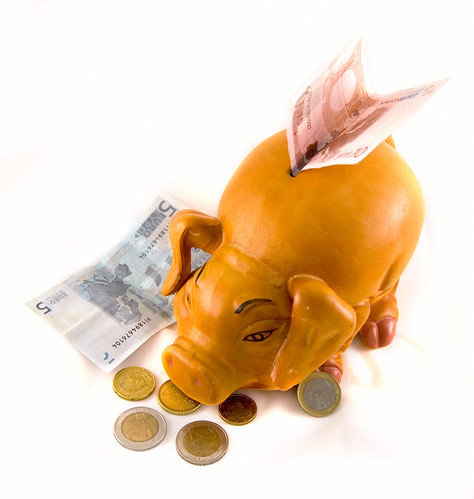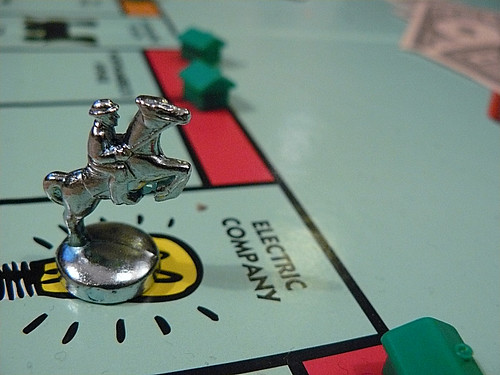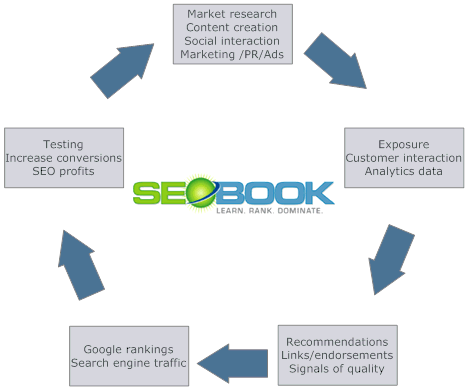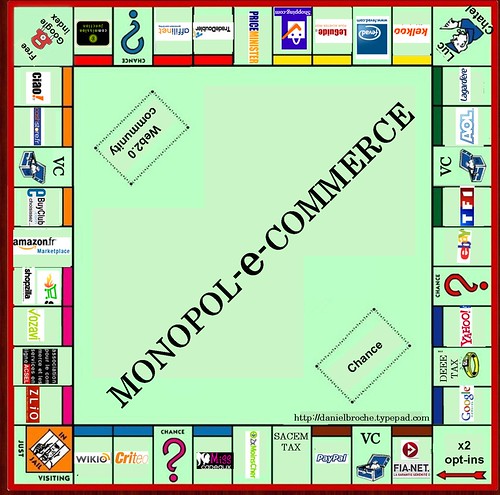How much do you really need? Depends...
Marketing is a numbers scene. Really. Look, I've told you about the Bell Curve and Leverage. They work together.
You're going to need several hundred products offered at a price which will give you, on average, your targetted weekly income. Figure about 300-500 products, selling for $10-$30 or more.
Reason? Bell Curve. About 3-5% of your customers will buy. About 20% of those products will be producing the bulk of your sales.
500 products - 25 (5%) might sell in a given week (although 2% is more common). That will net you $200-$500 per week, @ $20/product.
Seriously. Do the math.
Does this shoot you in the get-rich-quick foot? You bet it does. How long does it take to set up several hundred products? Weeks, if not months. Do most people do this? No.
What are the exceptions to this?
- Selling very high-end products to an exclusive clientele. (Radiological measuring devices to researchers.) Only have to sell one every year. But you have to really, really know your customers. Also means your operating budget runs by swings - as do your taxes if you happen to sell more than one in any fiscal year.
- Having a loyal clientele which you service very, very closely. Like MAC buyers.
But if you are just starting out - the trick is to build up a large inventory and track these to make sure you don't have duds in them.
What you must do at every chance is to get subscribers and take very good care of them as clients - not customers.
The numbers game tells you what the average herd/tribe "customer" reacts. But what you want to do is to get these turned into clients and have them buy on a repeating basis.
Let's look at these numbers again, saying that you have 2% turned into subscribers every week:
- First week - 3% buy, 2% are now subscribing regulars.
- Second week - 3% buy, plus the 2% from the week before = 5%. Another 2% added as clients.
- Third week - 3% buy, plus the 4% = 7%. You now add another 2% as clients.
- And so on.
Does this work out exactly like that? No. But having recurring customers does make your income go up - and is the only reason that people really get more than 2-5% on any offering, any sales page.
There is the odd "fluke" where a person gets 50% conversion from a single product - but what did that person do? He found a niche of clients who buy anything having to do with a certain product or brand. He tapped into an already converted body of clients - which someone else did all the work to create. Fads are made of this. What kills a fad? Lots of salespeople climbing in and poorly servicing the existing clients.
Too simple? Maybe.
My own research into people who don't make it in Internet Marketing and small business tends to show this simple pattern. Would you shop in a store if it only stocked one type of bread, one brand of cereal and one fruit? Big store - three products. Nope - stores know this, especially the Big-Box boys, like Wal-Mart.
Does the reverse work? Sure - a great bicycle store has what? Lots and lots of different brands of bicycles AND a great bicycle repairman - plus a policy that if you bought it here, repair parts are at cost and labor is free. (And would you like a ringing bell and larger tires to go with that?)
So, starting out, what do you need to do? Get tons of products, great sales pages for each one, everyone tied to their appropriate niche keywords. Make sure that people can subscribe to your site in a dozen ways, especially through email. And then really, really service that client you have and bend over backwards to make sure they are completely satisfied with what they have gotten from you in the past.
But the guys who expect to get rich quick are doing what? Putting up some expensive PPC ads for just a few products and quitting after they don't sell well. You can lose your shirt on eBay just in their fees - if you don't know what you are doing. But the guys who have made it to Power Seller status (which is a measly $1K per month - not enough to live on) are selling hundreds of items - not just a few. They can't sell a hundred of one item every week at any decent price. (But telemarketer scammers know this and sell eBay training to people who can't make that training work - and oh, yes, these scammers tell people to buy a lot of PPC ads...)
To be successful on eBay, you have to offer hundreds of items and expect that, by averages, you will get maybe 30-50% successful auctions every week. After fees and other expenses, you should eventually start to make a living off eBay. But track your other costs - how long does it take to track, return email, package, ship, give feedback on a couple hundred diverse items? That's right - if you're lucky, you'll get them all done in time to start the next week. You'll have to have time to research existing items and always hunt for new ones. Expensive in terms of time and money overheads.
In short, making a living on eBay is just as much hard work as it is anywhere else.
The people who don't want to work hard don't make it. They need the government subsidies and factory jobs - lots of structure. Entrepreneurs are driven to succeed by fulfilling their own burning desires - they are doing what they really want to be doing in life. And so they become their own boss and sell their products to the people who work in factories and get paid for spending their lives there.
Only 3% make it. That's the way its set up. And the way it's always been, no matter what type of government, what party is in charge, dictatorship, democracy, anarchy. The only thing different is that people can make a lot more money in a free-market economy. More people don't become outrageously successful, but the overall standard and quality of living is much higher.
Bell Curve. Leverage.
Use them and win.
And - oh, yes - Follow your Bliss.
- - - -
Disagree? Post your comment, please. I'd love to hear from you.
- - - -
Update - a few minutes later:
Oh - found a hole in this math. If you have one customer - they have to look at all 500 items. Won't happen.
This is figuring that you have 100 customers looking at each of your 500 products.
Obviously, if you only have a handful of viewers, you'll have 3% of a handful of conversions - maybe one a month. 12 sales a year won't pay your bandwidth.
That's why PPC works, somewhat. It can get people to your site - and has a much wider audience than you could find on your own.
But, say you put a video up for each product on YouTube, or a presentation up on slideshare (even better). Means you can get hundreds of people looking at your stuff.
That's why eBay is used by scammers to get people hooked. Millions of potential customers searching for stuff - they are mostly pre-sold already. Easy to get started. However, the people fail when they build their own site and they find that they can't 1) get people to their site in any volume, and 2) get any decent percentage of those few to convert.
The scam training says to a) get your buyers to come to your site to buy there (which ebay really discourages), or b) set up an (expensive) eBay storefront.
The one success I've seen is to sell a CD on eBay which sends the person online and gets their email with a free subscription to a "members only" site - and that follows the above scenario I laid out. Get your customers converted over to subscribers. And use eBay as a lead generation site. The more of these CD's you sell (this was burned on a local machine with a paste-on label and mailed regular first class - all for $14, an overhead of maybe a buck-fifty. And if they had offerered me more than just what-goes-for-average service I might have kept up subscribing to their emails.)
[And note, the scammers don't tell you how to get subscribers to your email autoresponder. Or anything about RSS subscriptions or social media subscribers...]
And that is the crux of Internet Marketing. It's a numbers game - and those who are in the top positions of the search engines get the bulk of the traffic. The other option is to pay high eBay and PPC fees so people will come and buy your stuff. Your choice - spend more time getting top SERPs or pay more money to get their faster.















